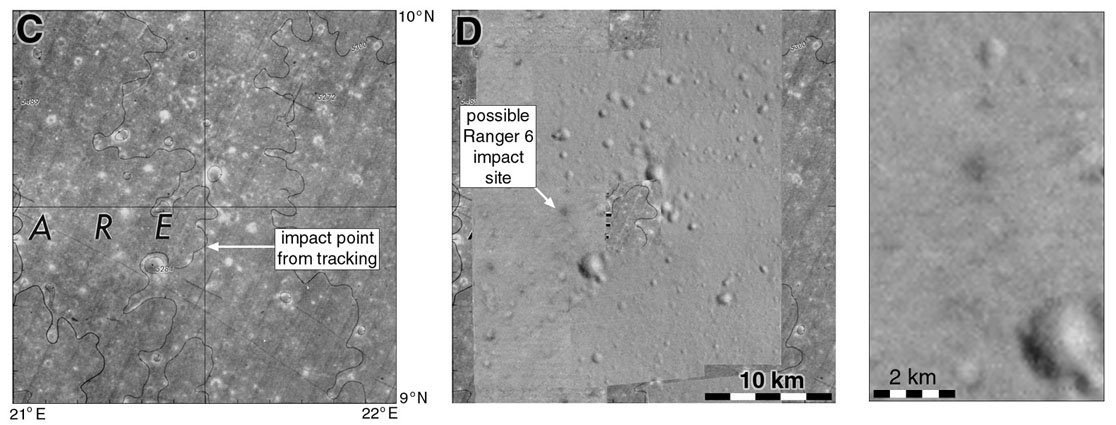August 6, 2015
Ranger Cratering
Originally published August 5, 2004
Image Credit: Phil Stooke |
|
Ranger Cratering Identification of craters made by spacecraft impact on the Moon is valuable because it permits calibration of impact energy and crater size relations. And its fun. The camera failure on the otherwise successful Ranger 6 meant that it's exact crash point is unknown. Now this mosaic of Clementine Long Wavelength Infrared images (right image) may solve that mystery. But first, here is some context. Image C is a one degree square from the LTO of the area (LTO60B4), here made of high sun Apollo images. Image D is the same image eaxctly, but overlaid with a mosaic of the Clementine LWIR images. LWIR doesn't give full coverage so there are gaps through which the LTO can be seen. The proposed Ranger 6 impact point is a unique dark spot in LWIR, but just one of many bright spots in the visible. This small triangular dark spot is only 7 km northwest of the tracking prediction for the Ranger 6 impact point. I propose that this is the Ranger 6 impact ejecta deposit. I looked at the Consolidated Lunar Atlas to see if the spot is 'new' - but alas, the CLA image of the area was taken after the impact! Also, the spot is only barely visible, if at all. The large crater seen in the Clementine view is shown on the LAC of the area and is visible in the CLA. This image was prepared as an illustration for my forthcoming atlas of lunar exploration. Technical Details: Related Links: Yesterday's LPOD: A New Way to Image the Moon Tomorrow's LPOD: Moon Resort |
Author & Editor: |
COMMENTS?
Register, Log in, and join in the comments.




